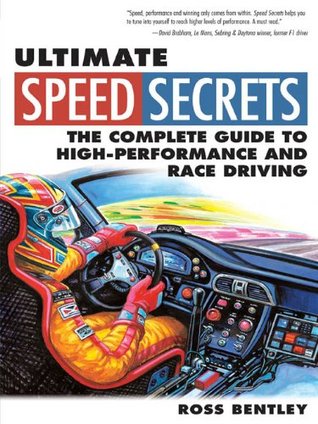More on this book
Kindle Notes & Highlights
by
Ross Bentley
Started reading
August 24, 2017
When trying to pass another car, sometimes you actually have to hang back a little so you can get a “...
This highlight has been truncated due to consecutive passage length restrictions.
the faster car then needs to slow down as well, losing all its momentum. That driver would have been better off easing back just a little early for the turn,
The driver of the car on the inside deserves to have the door shut on him by the car on the outside, for two reasons. First, the driver hasn’t “presented” himself to the other car by getting far enough alongside him. Second, he is too close to the inside edge of the track—too far away from the car on the outside—making it very difficult for the other driver to see him.
Instead, he should have eased off the brakes slightly to get farther alongside the other car and run closer to it as well (a small side benefit of running close to the other car is if the two cars do hit, the impact will be lighter).
A general rule is you can defend your position by altering your line, but only once. If you weave down the straight or alter your line two or three times on the approach to a corner, that’s called blocking.
When you have modified your line to pass a competitor, simply “blend” back onto the ideal line as soon as possible.
front-wheel-drive car
With a front-wheel-drive car you have to be careful while accelerating in a corner. If you get on the throttle too hard, you overwork the front tires’
it’s important to trail brake a little more on the entrance to corners. Left-foot braking is used by many front-wheel-drive racers to help with this trail braking. Additionally, you may have to use
“trailing throttle oversteer”
to control the understeer in the middle of a long corner. This means quickly easing off, or “trailing” off, the throttle in the middle of the corner to cause forw...
This highlight has been truncated due to consecutive passage length restrictions.
rear-wheel...
This highlight has been truncated due to consecutive passage length restrictions.
“kick” the rear around tight corners with power oversteer by quickly appl...
This highlight has been truncated due to consecutive passage length restrictions.
Some say you must be more precise, that there’s less room for error, when racing a front-wheel-drive car.
You need to adapt your driving technique to suit your car’s polar moment of inertia, by changing—among many things—the timing and motion of your initial turn-in.
Usually, the higher your car’s polar moment of inertia, the sooner you need to begin turning in, as it will take longer to respond.
You may want to try to straighten the front wheels a little sooner when exiting a corner with a front-wheel-drive, as the limit of how much throttle you can g...
This highlight has been truncated due to consecutive passage length restrictions.
Therefore, when driving a car with a high moment of inertia, it will take longer for it to react to your initial turn-in. To compensate, begin your turn-in slightly earlier and make the turn of the steering wheel more progressive. If you don’t do that, you will probably find yourself struggling to get the car tucked right in close against the apex without over-slowing the car.


